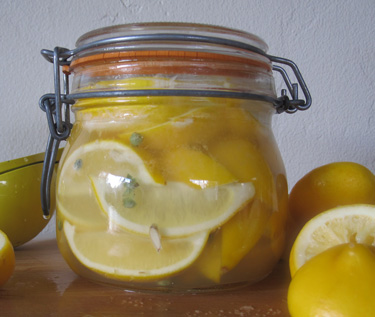A lemon a day
Winter is peak harvest time for citrus trees. Meryn Wakelin wouldn’t waste a single lemon.
If I was stranded on an island and could have just one tree, it would unquestionably be a lemon tree. It would provide me with shade and be a lifesaver - not only for my health (lemons have been long valued for their nutritious and antioxidant properties), but also my taste buds.
Juicy, tart, intense and deliciously refreshing, the whole lemon is a culinary delight and a powerhouse to bring out the flavour of other foods. If you need to reduce your salt intake try substituting with a little lemon squeezed over food to lift and enhance flavour.
The citric acid in lemons aids digestion and pairing lemon juice with iron rich foods such as spinach helps to enhance absorption of iron. Lemon juice combined with fresh crushed garlic, extra virgin olive or avocado oil, salt and pepper is arguably the most refreshing salad dressing of all. It is one of the best marinades for tenderising meat and an essential accompaniment for fish. As a quick but major improvement to a midweek meal, try adding chopped fresh soft herbs, lemon zest and juice to cooked brown rice.
If you have never taken up the habit of starting each day with the juice of ½ a lemon squeezed into a mug of warm water, now is the time! It should be included in every preventative health plan, helping your body cleanse and detoxify, and stimulating the immune and digestive systems to work their very best for you.
Three of the best things to do with an abundance of lemons
Especially in cooler climates, there is often a time of year when there are no ripe lemons on the tree, so it’s worth preserving a winter abundance for later use:
- Squeeze the juice and freeze in ice cube trays, then store free-flow style in a container.
- Zest lemons, avoiding the bitter pith, with a lemon zester, vegetable peeler or fine grater and air dry thoroughly in a warm spot before storing in an airtight container to use whenever lemon zest is required.
- Make jars of preserved lemons. They make wonderful gifts. Preserved lemons impart a deep complex lemony flavour to savoury dishes and I absolutely love using them in easy Mediterranean style chicken and lamb dishes particularly. You can use preserved lemons in just about any savoury dish that calls for fresh lemon or lemon zest. See the recipe below.
What’s in a lemon?
The juice of one average sized raw lemon yields about a third of our recommended daily intake of vitamin C, one of the most important antioxidants in nature. It also contains dietary fibre, vitamin A, thiamin, riboflavin, vitamin B6, pantothenic acid, calcium, iron, magnesium, phosphorus, potassium, copper and manganese.
Health benefits
- Powerful vitamin C works as an antioxidant to help fight the formation of free radicals, which are known to cause cancer and generally age us. It helps prevent asthma and is a valued added therapy to treat arthritis and other inflammatory conditions.
- The American Heart Association says eating higher amounts of citrus may reduce the risk of stroke in women. When applied topically lemon juice can help heal sun and pollution damaged skin, improving skin texture by stimulating the production of collagen.
- Research has shown that the consumption of vegetables and fruits high in Vitamin C is associated with a reduced risk of death from all causes.
Meryn Wakelin is a naturopath and nutrition consultant. www.healnaturally.co.nz
Preserved Lemons
You will need:
- Lemons
- Plenty of course sea salt
- 1 medium size bowl
- A jar, or several, depending on how many lemons you wish to preserve. I like to use 500mls – 1L size jars. The smaller size is great for gifts and larger size for self!
Note: I have learnt from experience that it is best to use the clip glass top style jar with a rubber or plastic seal. The salt quickly corrodes and rusts metal screw on style lids and as properly preserved lemons can last for a year or more when kept in the fridge you want your jar to cope with the task!
How to do it:
- Sterilize your jars for 15 minutes in a 140C oven.
- Wash and dry your lemons and remove any stems.
- With the stalk end of the lemon down and pointy end up, slice each lemon into quarters, about three quarters of the way through, leaving the lemon fully intact at the stalk end.
- Working over the bowl, 1 lemon at a time, cram about 1 tablespoon of salt inside the cuts. Press each salted lemon down firmly as you place it into the jar, so a good quantity of salty juice is squeezed out around it. Repeat until the jar is almost full and hopefully the top lemons are covered in juice. If not, squeeze some extra lemon juice to cover before releasing any air bubbles, then seal.
- Leave the jars at room temperature, away from direct sunlight for 3 - 4 weeks, upending them every few days to ensure even curing of the lemons. The lemons are ready when their peel is soft.
- Storing your preserved lemons in the fridge once opened will ensure a jar of these culinary delights last a good year at least
28-May-2015

Preserved lemons


